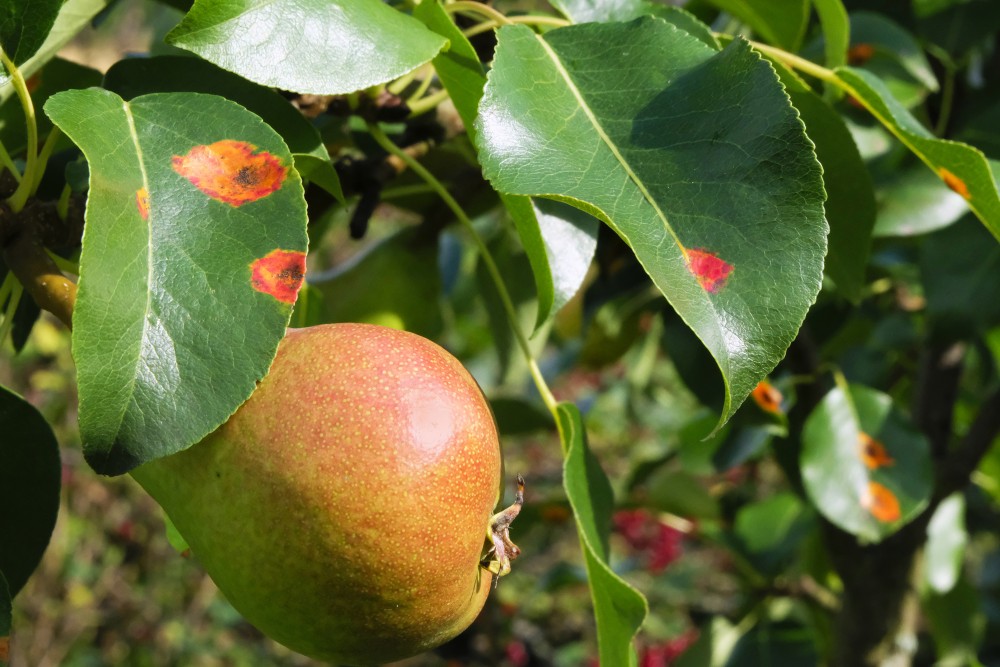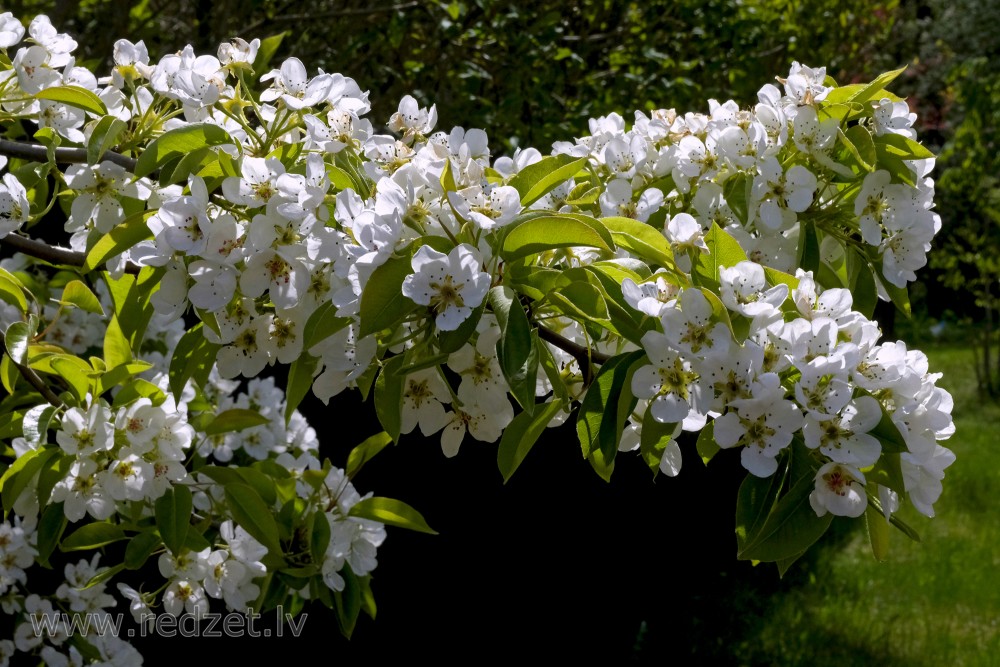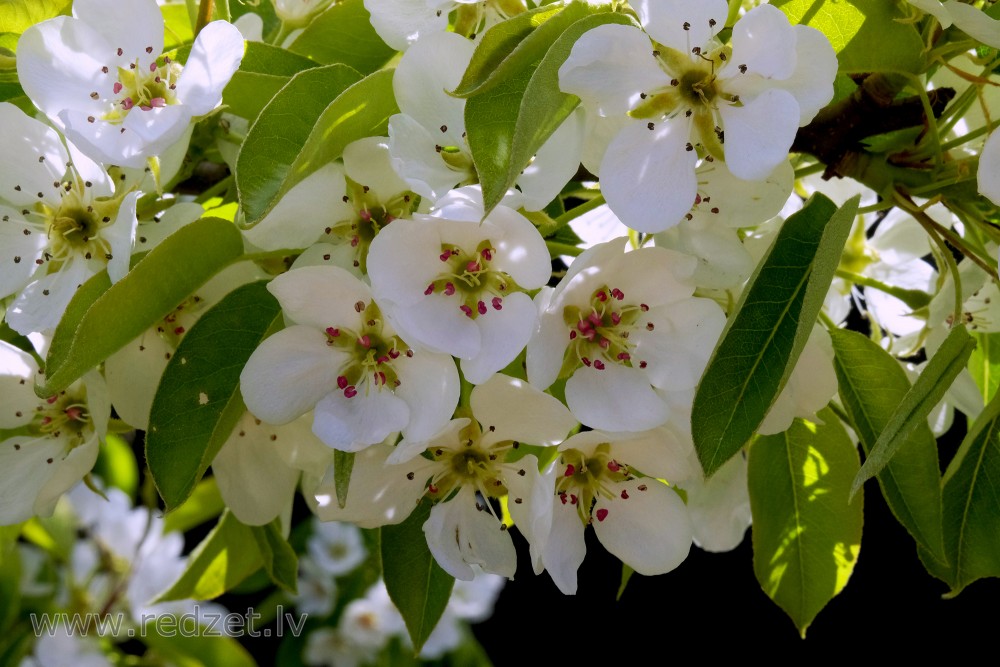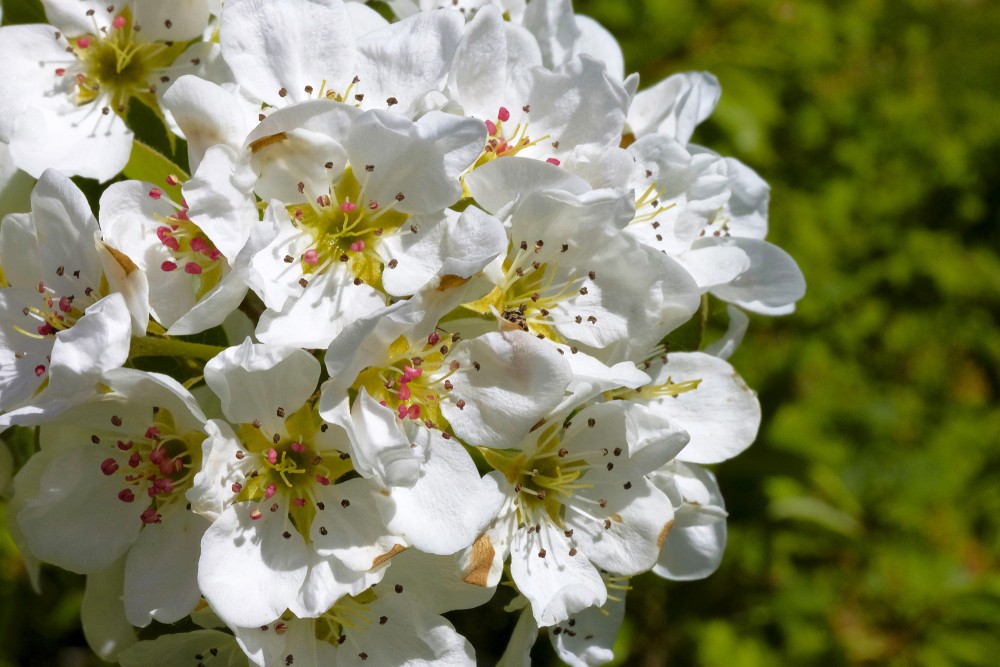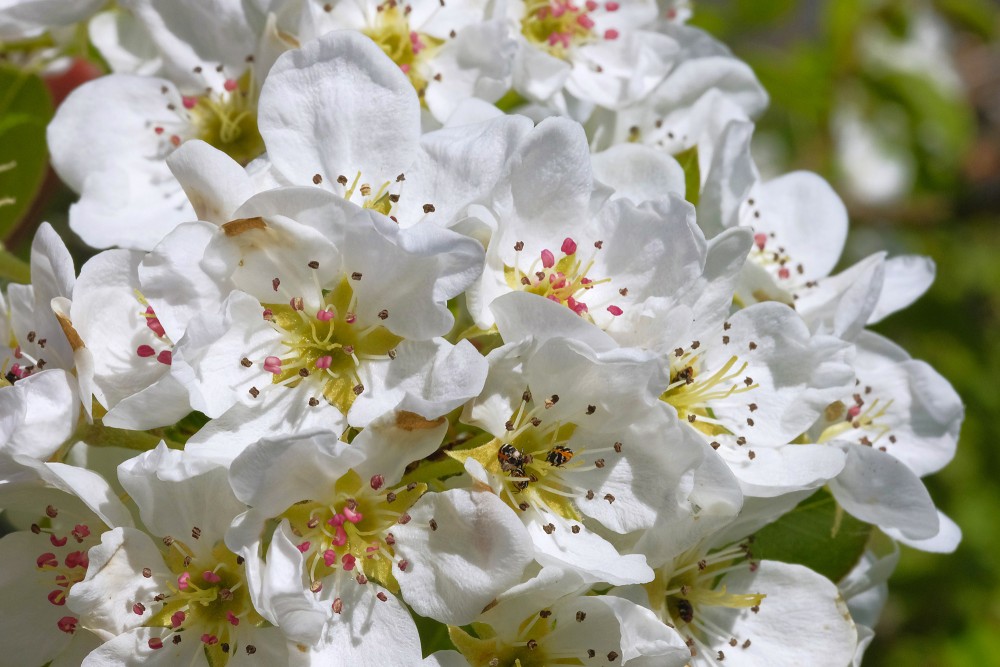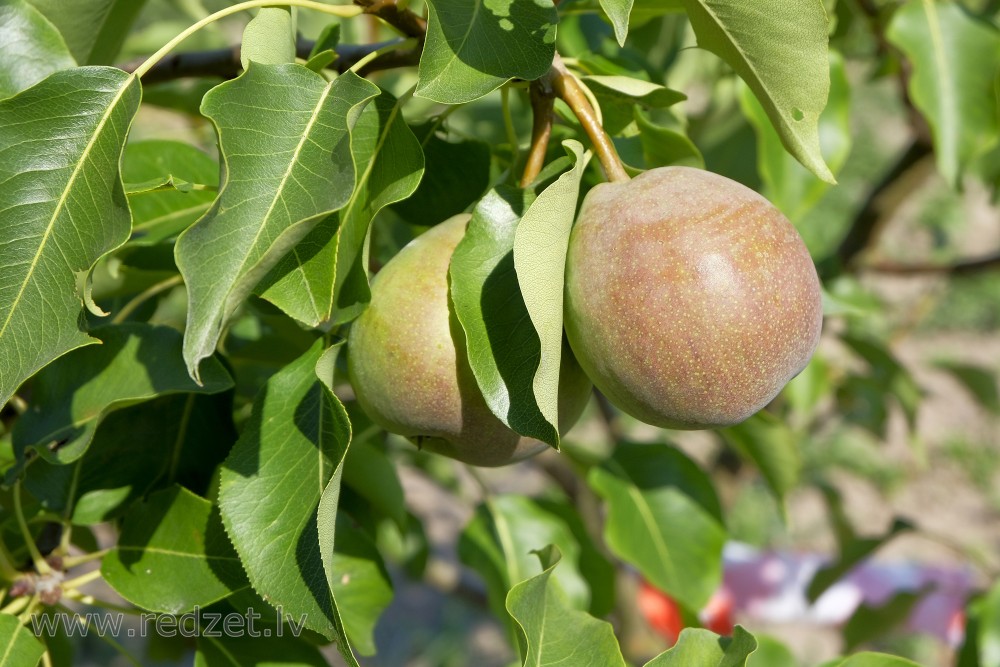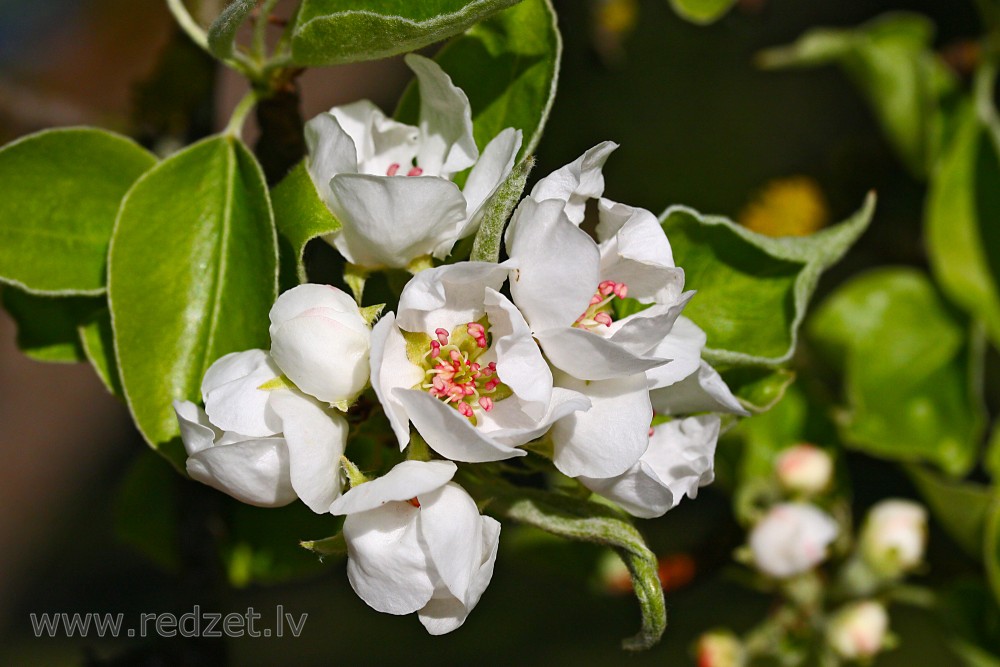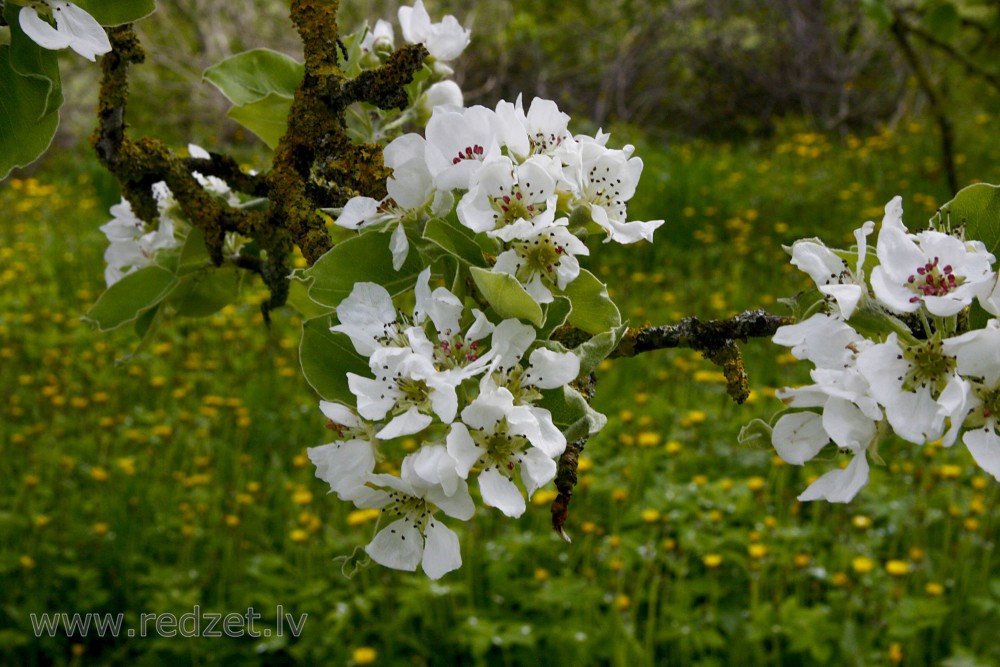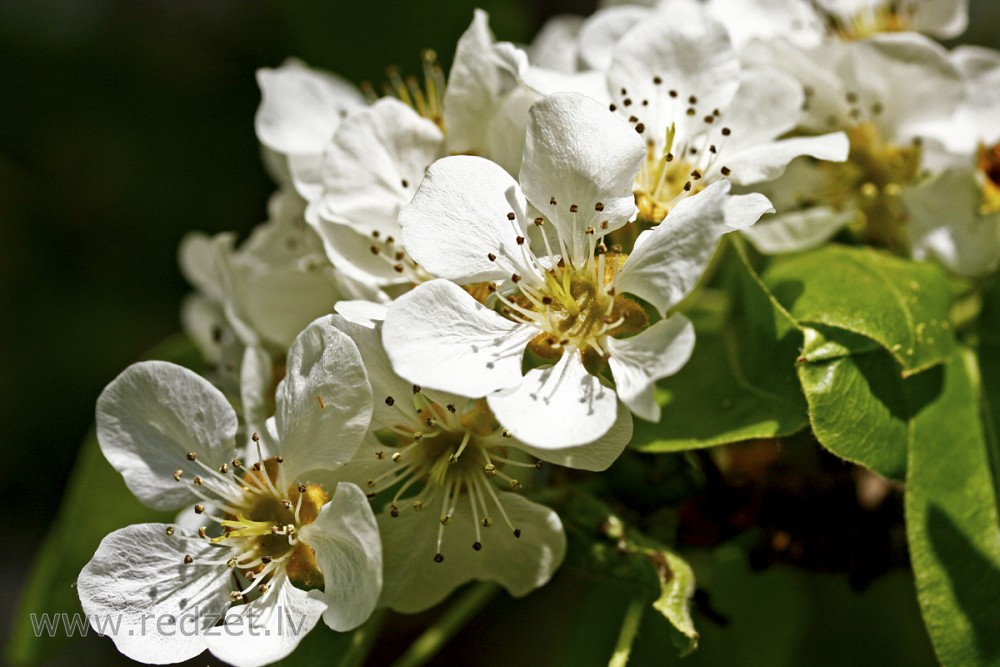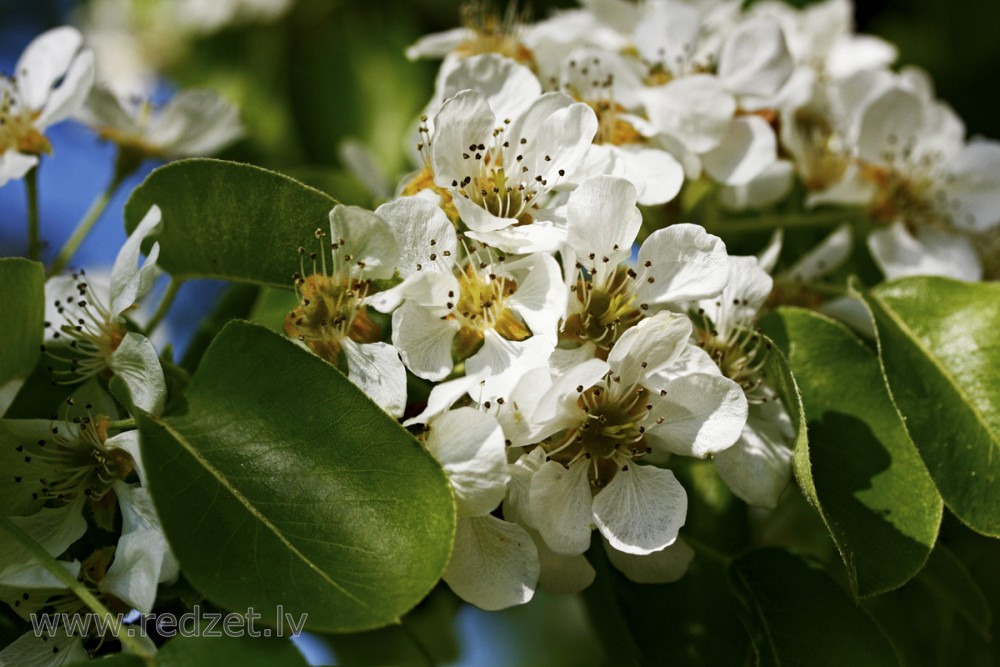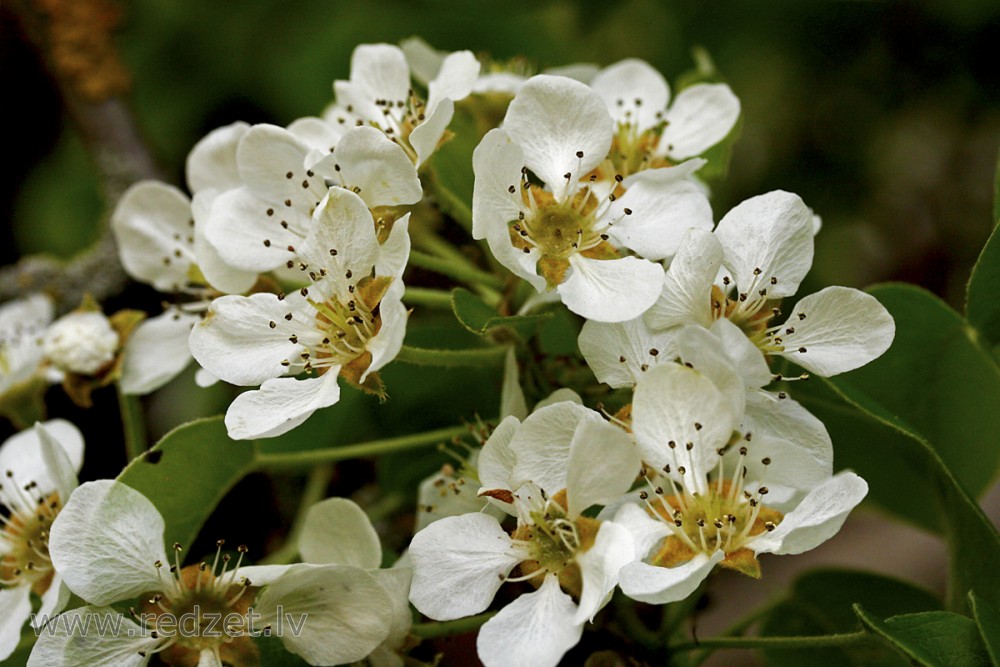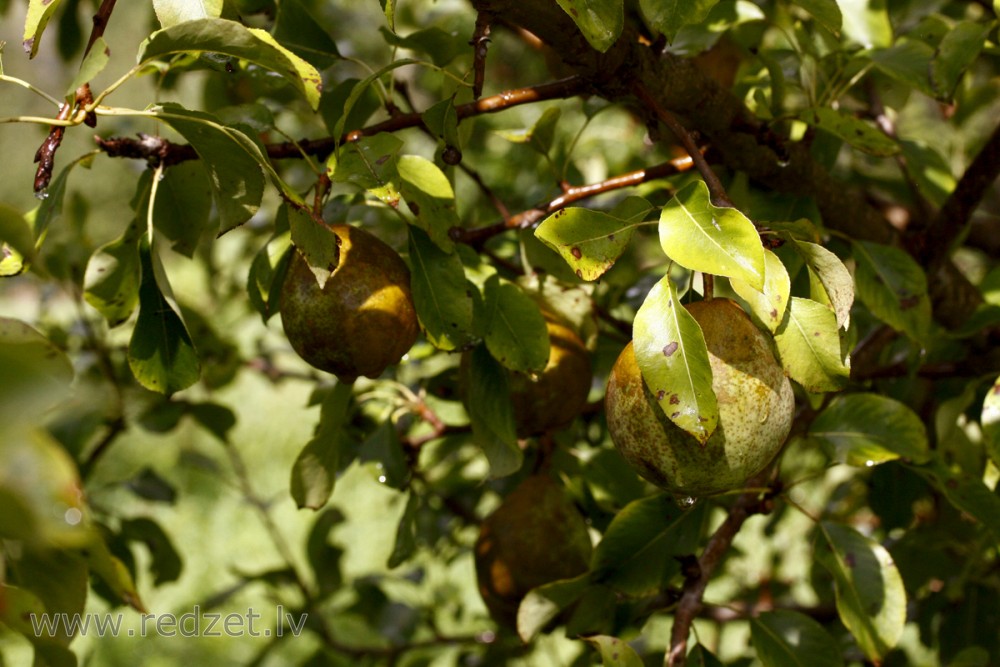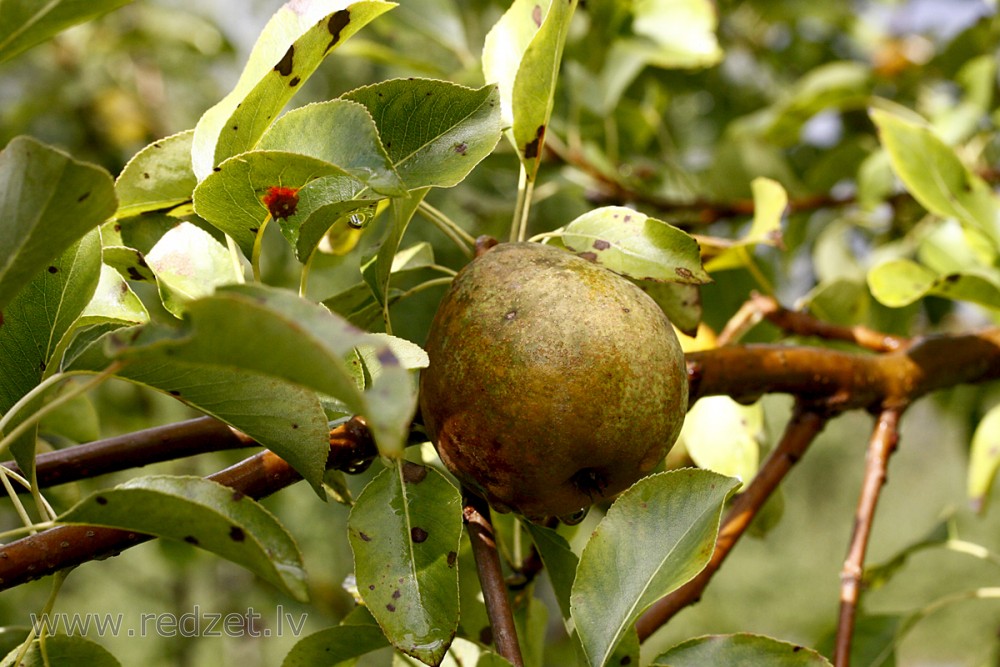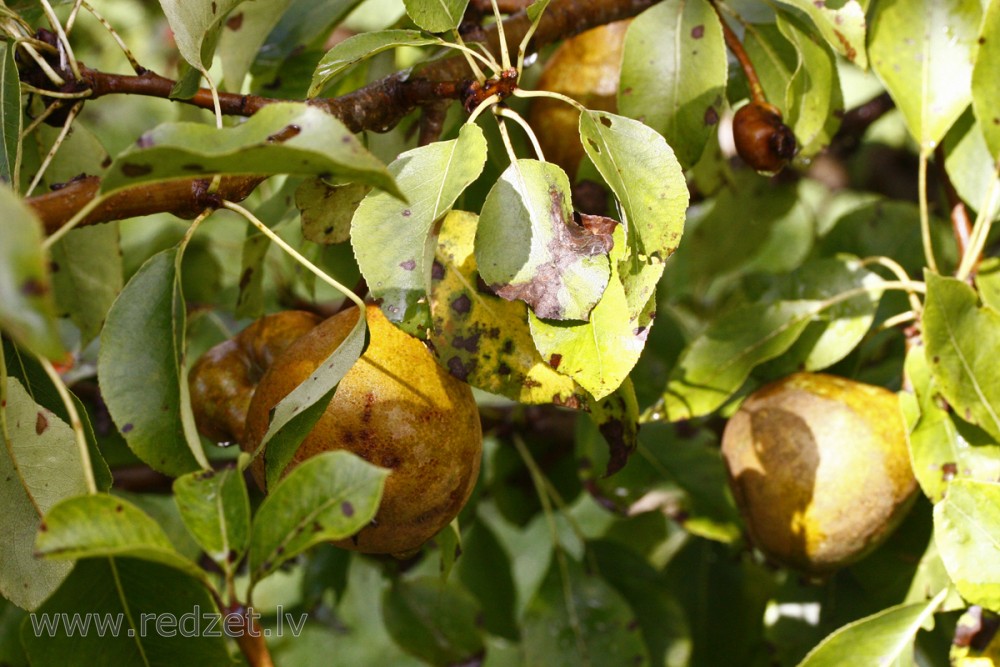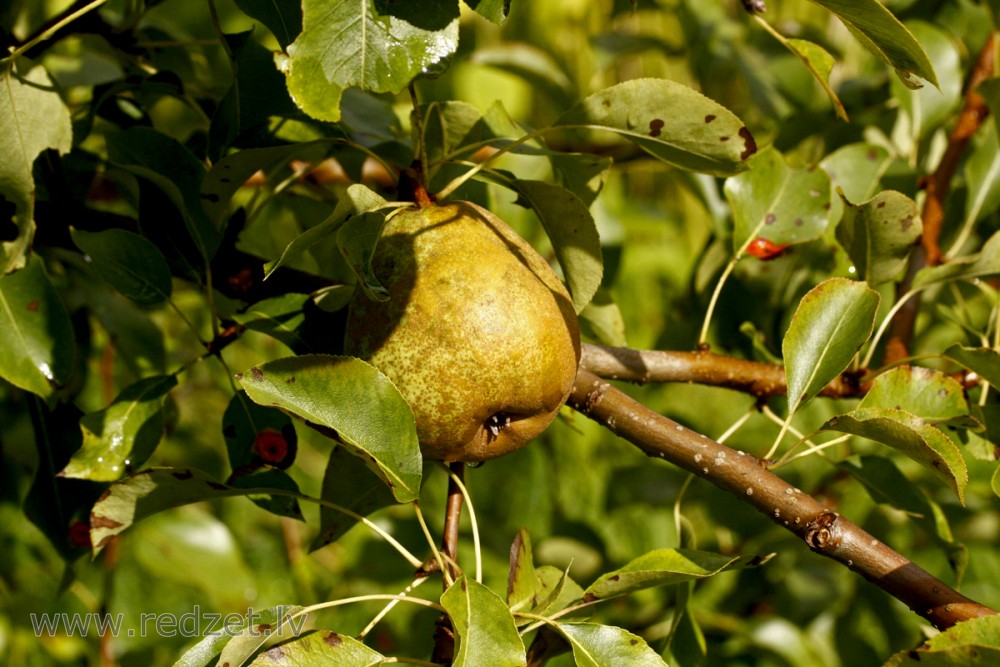Pyrus communis (European pear)
Pyrus communis, known as the European pear or common pear, is a species of pear native to central and eastern Europe and southwest Asia.
It is one of the most important fruits of temperate regions, being the species from which most orchard pear cultivars grown in Europe, North America, and Australia have been developed. Two other species of pears, the Nashi pear (Pyrus pyrifolia) and the hybrid Chinese white or ya pear (Pyrus × bretschneideri, Chinese: 白梨; pinyin: báilí) are more widely grown in East Asia.
Scientific classification
Kingdom: Plantae
Clade: Angiosperms
Clade: Eudicots
Clade: Rosids
Order: Rosales
Family: Rosaceae
Genus: Pyrus
Species: P. communis
Cultivation
European pear trees are not quite as hardy as apples, but nearly so. However, they do require some winter chilling to produce fruit. A number of Lepidoptera caterpillars feed on pear tree leaves.
For best and most consistent quality, European pears are picked when the fruit matures, but before they are ripe. Fruit allowed to ripen on the tree often drops before it can be picked, and in any event will be hard to pick without bruising. Pears store (and ship) well in their mature but unripe state if kept cold, and can be ripened later, a process called bletting. Some varieties, such as Beurre d'Anjou, ripen only with exposure to cold.
Fermented pear juice is called perry. In Britain, the place name "Perry" can indicate the historical presence of pear trees.
Relatively few cultivars of European or Asian pears are widely grown worldwide. Only about 20-25 European and 10-20 Asian cultivars represent virtually all the pears of commerce. Almost all European cultivars were chance seedlings or selections originating in western Europe, mostly France. The Asian cultivars all originated in Japan and China. 'Bartlett' (Williams) is the most common pear cultivar in the world, representing about 75% of US pear production.
en.wikipedia.org
